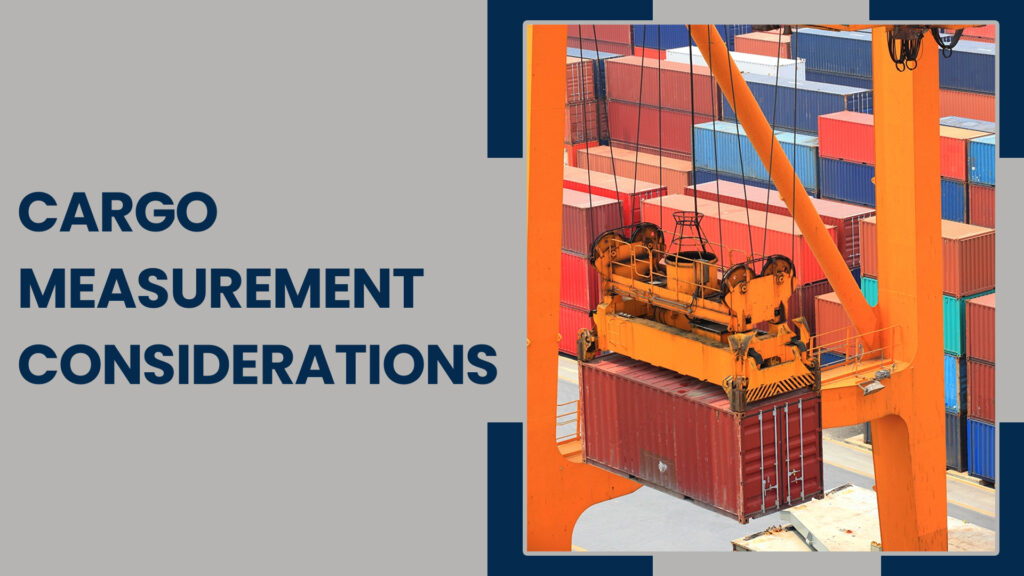Shipping containers are integral to global trade and logistics, playing a crucial role in transporting goods across continents. AB Sea Container, a leader in container solutions, offers a comprehensive guide to understanding shipping container measurements. This guide aims to unlock efficiency and optimize cargo handling processes for businesses and industries worldwide.
Understanding Shipping Container Dimensions
Shipping containers come in various sizes, each designed to accommodate different types of cargo. The two most common sizes are the standard 20-foot container and the larger 40-foot container. Understanding the dimensions of these containers is essential for efficient packing and utilization of space.
Standard 20-Foot Container
The standard 20-foot container, also known as TEU (Twenty-foot Equivalent Unit), has dimensions of approximately 20 feet in length, 8 feet in width, and 8 feet 6 inches in height. It offers a storage capacity of about 1,170 cubic feet and is suitable for transporting smaller loads or when space constraints are a consideration.
Larger 40-Foot Container
The larger 40-foot container, often referred to as FEU (Forty-foot Equivalent Unit), measures around 40 feet in length, 8 feet in width, and 8 feet 6 inches in height. It provides double the storage capacity of a 20-foot container, with approximately 2,350 cubic feet of space. This size is ideal for transporting larger volumes of cargo or oversized items.
Specialized Containers
In addition to standard sizes, AB Sea Container offers specialized containers to meet specific cargo requirements. These include refrigerated containers (reefers) for perishable goods, open-top containers for tall or bulky items, and flat rack containers for heavy machinery or equipment. Understanding the dimensions and specifications of these specialized containers is crucial for efficient logistics planning.
Cargo Measurement Considerations

When planning cargo shipments, it’s essential to consider not only the dimensions of the shipping containers but also the internal space available for cargo. Factors such as palletization, stacking height, weight distribution, and cargo securing methods impact the efficient use of container space and safe transportation of goods.
Optimizing Container Utilization
AB Sea Container emphasizes the importance of optimizing container utilization to maximize efficiency and reduce shipping costs. This includes proper packing techniques, utilizing container floor space effectively, stacking cargo safely and securely, and adhering to weight limits and loading guidelines.
Cargo Compatibility
Another aspect of understanding shipping container measurements is ensuring cargo compatibility. Different types of cargo require specific container configurations, such as ventilated containers for goods that require airflow or tank containers for liquid cargo. AB Sea Container provides guidance on selecting the right container type for different cargo types to ensure safe and efficient transportation.
Regulatory Compliance
AB Sea Container’s guide also covers regulatory compliance related to shipping container measurements. This includes international standards for container sizes, weight limits, container markings, and documentation requirements. Adhering to these regulations is essential for smooth customs clearance and compliance with shipping protocols.
Case Studies and Best Practices
The guide includes case studies and best practices from industries that rely heavily on shipping containers. Examples include the automotive industry for vehicle transportation, the pharmaceutical industry for temperature-sensitive medications, and the retail sector for inventory management. These real-world examples illustrate the importance of understanding container measurements for successful logistics operations.
Empowering Efficient Logistics
AB Sea Container’s guide to understanding shipping container measurements is a valuable resource for businesses and logistics professionals. By unlocking the efficiency of container utilization, optimizing cargo handling processes, ensuring cargo compatibility, and complying with regulations, businesses can streamline their logistics operations and achieve cost-effective and timely delivery of goods. Embracing the principles outlined in this guide empowers efficient logistics management and strengthens global trade networks.
FAQs
1. What are shipping container measurements?
Shipping container measurements refer to the dimensions of containers used for transporting goods, including length, width, and height.
2. What are the standard sizes of shipping containers?
Standard sizes include the 20-foot container (TEU) and the 40-foot container (FEU), with specific dimensions for efficient cargo handling.
3. How do I determine the right container size for my cargo?
Consider factors such as cargo volume, weight, dimensions, and stacking requirements to determine the most suitable container size.
4. What specialized containers does AB Sea Container offer?
AB Sea Container offers specialized containers like refrigerated (reefers), open-top, and flat rack containers to meet diverse cargo needs.
5. What are the weight limits for shipping containers?
Weight limits vary based on container type and shipping regulations. AB Sea Container provides guidance on weight restrictions for safe transportation.

